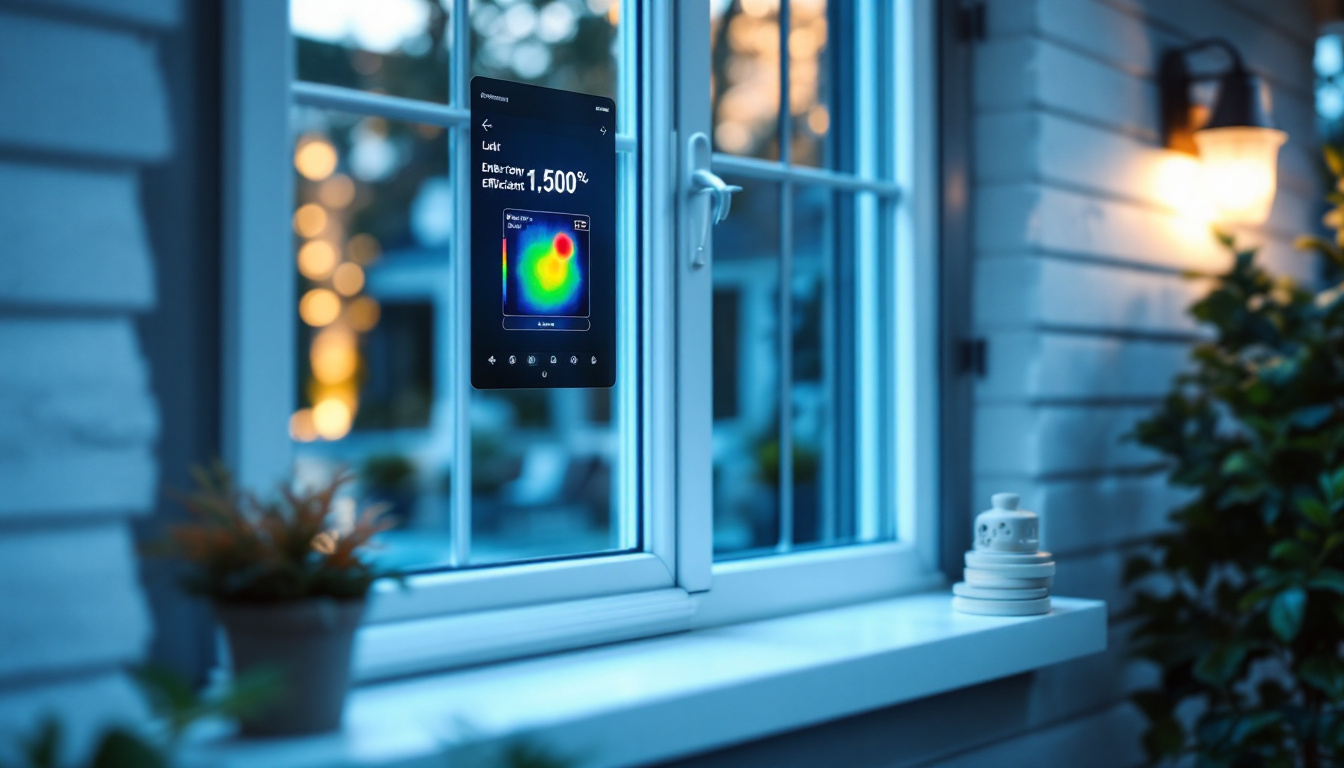Understanding the cost of single hung window installation can help homeowners make informed decisions when upgrading their homes. Single hung windows remain one of the most popular and cost-effective window styles in Ontario and across Canada, offering a balance of functionality, energy efficiency, and affordability. This comprehensive guide breaks down all the factors that influence installation costs and provides insights into maximizing your investment.
What Are Single Hung Windows?
Before diving into costs, it’s important to understand what makes single hung windows distinct from other window types. These traditional windows feature a fixed upper sash and a movable lower sash that slides vertically, making them a simple yet effective choice for many homes.
Key Features of Single Hung Windows
Single hung windows are characterized by their straightforward operation and classic appearance. The bottom sash moves up to open, while the top sash remains stationary. This design limits air flow to the bottom half of the window but provides adequate ventilation for most rooms.
These windows typically require less hardware than double hung alternatives, contributing to their lower cost point. The simplified mechanism also means fewer moving parts that could potentially require maintenance or replacement over time.
Advantages Over Other Window Types
When compared to other window styles, single hung windows offer several distinct advantages that make them appealing to homeowners:
- Cost-effectiveness: Generally 10-20% less expensive than double hung windows
- Better energy efficiency: Fewer moving parts mean fewer potential air leaks
- Classic aesthetic: Traditional look that complements various architectural styles
- Durability: Simpler design often translates to longer lifespan
- Space efficiency: Doesn’t require clearance space to swing outward
Average Cost Breakdown for Single Hung Window Installation
The total cost of installing single hung windows varies based on multiple factors, including material quality, window size, and labor rates in your region. Understanding these components can help you budget appropriately for your window replacement project.
Material Costs
The frame material significantly impacts both the upfront cost and long-term performance of your single hung windows. In 2025, homeowners can expect to pay within these ranges for standard-sized single hung windows (excluding installation):
- Vinyl frames: $150-$400 per window
- Aluminum frames: $175-$450 per window
- Wood frames: $300-$800 per window
- Fiberglass frames: $500-$900 per window
- Composite frames: $400-$800 per window
Premium features like Low-E glass, gas fills, or custom sizing will add to these base costs but often provide better energy efficiency and comfort benefits.
Labor and Installation Costs
Professional installation typically accounts for 30-40% of your total window replacement budget. For single hung windows, installation costs generally range from $100-$300 per window, depending on complexity and local labor rates.
Factors that can increase installation costs include:
- Structural modifications needed to accommodate new windows
- Difficult access points (second story or higher installations)
- Removal and disposal of old windows
- Custom trim work or finishing
- Permits and inspections (where required)
Additional Cost Considerations
Beyond the basic window and installation costs, homeowners should budget for several potential additional expenses:
Window treatments such as blinds or curtains can add $50-$200 per window. Exterior finishing work, including caulking, flashing, or siding repairs, might add another $25-$100 per window. For older homes, unexpected issues like rot or structural damage discovered during installation can increase costs by $100-$500 per affected window.
Cost Comparison: Single Hung vs. Other Window Types
Understanding how single hung windows compare financially to other popular window styles can help you determine if they’re the right choice for your home and budget. While single hung windows typically offer the best value, other styles may provide benefits that justify their higher costs.
Single Hung vs. Double Hung Windows
Double hung windows, which feature two operable sashes, generally cost 10-20% more than comparable single hung models. For a standard-sized vinyl window, expect to pay $250-$500 for double hung versus $150-$400 for single hung.
The additional cost of double hung windows comes with benefits like improved ventilation options, easier cleaning (as both sashes can tilt inward), and more versatile air flow control. For bedrooms, bathrooms, and other areas where ventilation is crucial, the additional investment might be worthwhile.
Single Hung vs. Casement Windows
Casement windows, which open outward like a door using a crank mechanism, typically cost 20-30% more than single hung windows. A standard vinyl casement window ranges from $300-$600 before installation.
The higher price point reflects casement windows’ superior energy efficiency (they seal tightly when closed), unobstructed views, and excellent ventilation capabilities. For homes in windy areas or rooms where maximum airflow is desired, casements may justify their premium price.
Factors Affecting Single Hung Window Installation Costs
Several key variables can significantly impact the final price of your single hung window project. Understanding these factors helps you anticipate potential cost variations and make informed decisions about your window investment.
Window Size and Customization
Standard-sized single hung windows are considerably more affordable than custom dimensions. Expect to pay a 20-50% premium for custom-sized windows, as these require special manufacturing processes and cannot benefit from the economies of scale that standard sizes enjoy.
Other customizations that affect pricing include specialty glass options (like tempered or obscured glass), custom grid patterns, and non-standard frame colors. Each customization typically adds 5-15% to the base window cost.
Geographic Location and Local Market Conditions
Window installation costs vary significantly by region due to differences in labor rates, building codes, and climate requirements. Urban areas typically command higher installation prices than rural locations due to higher overhead costs for contractors.
Climate considerations also impact costs—windows in extreme weather regions often require enhanced features like impact resistance, better insulation values, or specialized glazing, all of which increase the overall price.
Complexity of Installation
The difficulty of your specific installation scenario directly affects labor costs. Straightforward replacements where new windows fit existing openings perfectly will cost less than projects requiring structural modifications or special installation techniques.
Second-story or higher installations typically incur a 10-30% premium due to the additional equipment, safety measures, and time required. Similarly, installations in older homes often cost more due to non-standard rough openings or the need to address deteriorated framing.
Energy Efficiency and Long-Term Savings
While upfront costs are important, the long-term energy performance of your single hung windows should factor heavily into your decision-making process. energy-efficient windows can significantly reduce heating and cooling costs, offsetting their higher initial price over time.
Energy-Efficient Features and Their Costs
Modern single hung windows offer various energy-saving features that add to the base cost but improve performance. Low-E glass coatings typically add $30-$50 per window but can reduce energy loss by 30-50%. Gas fills (usually argon or krypton) add $30-$70 per window and improve insulation by slowing heat transfer through the glass.
Double or triple glazing increases costs by $100-$300 per window but can double or triple the insulating value. Warm-edge spacers and insulated frames add $20-$100 to window costs while reducing thermal bridging and condensation issues.
Return on Investment Calculations
Energy-efficient single hung windows can reduce heating and cooling costs by 15-25% annually. For the average Ontario home spending $2,000 yearly on climate control, this represents $300-$500 in annual savings.
With these savings, premium energy-efficient windows often pay for their additional cost within 3-7 years, while continuing to provide savings throughout their 15-25 year lifespan. Beyond direct energy savings, these windows can also increase home value by 70-80% of their cost when selling your home.
Available Rebates and Incentives
Various government and utility programs can significantly reduce the effective cost of installing energy-efficient single hung windows. Taking advantage of these incentives can make premium window options more affordable while accelerating your return on investment.
Federal and Provincial Programs
Canada’s Greener Homes Grant offers up to $5,000 for qualifying energy-efficient home improvements, including window replacements that meet specific energy ratings. To qualify, windows must be ENERGY STAR certified and installed by licensed professionals.
Provincial programs like Ontario’s Home Renovation Savings Program provide additional rebates that can be combined with federal incentives. These programs typically require pre-approval and post-installation verification to ensure compliance with energy efficiency standards.
Utility Company Incentives
Many local utility companies offer their own rebate programs for energy-efficient window installations. These incentives typically range from $25-$100 per window and may have specific requirements regarding window performance ratings or installation procedures.
Combined with government programs, utility rebates can reduce the effective cost of premium single hung windows by 15-30%, making higher-quality options more accessible to budget-conscious homeowners.
Choosing the Right Contractor for Installation
The quality of installation significantly impacts both the performance and longevity of your single hung windows. Selecting the right contractor is as important as choosing the windows themselves and can prevent costly issues down the road.
Evaluating Window Installation Companies
When comparing window installation contractors, look beyond the quoted price to evaluate their qualifications and reputation. Verify that potential contractors are licensed, insured, and certified by window manufacturers to install their products. Manufacturer certification often means installers have received specialized training and can offer enhanced warranties.
Review customer testimonials and completed projects similar to yours. Reputable contractors should willingly provide references from recent clients with similar window installations. Check online review platforms and the Better Business Bureau for unfiltered feedback about their service quality and reliability.
Understanding Quotes and Warranties
Comprehensive installation quotes should itemize all costs, including windows, labor, materials, and potential additional charges. Be wary of significantly lower quotes that may indicate corners being cut or the use of lower-quality materials.
Warranty coverage is equally important—look for contractors offering both manufacturer warranties on the windows (typically 10-20 years) and workmanship warranties on the installation (ideally 5-10 years). These warranties provide valuable protection against defects and installation-related issues that might emerge over time.
By carefully considering all these factors—from basic costs to energy efficiency features and qualified installation—homeowners can make informed decisions about single hung window investments that balance upfront affordability with long-term performance and savings.





